The 61st Engineer Legion Mixed Battalion (61e BMGL) was a combined unit of the French Army, composed of regular Army sappers and legionnaires. Created in early 1971, the battalion was tasked with constructing Camp Canjuers, the largest military training area in Western Europe at the time. After subsequently working at the Larzac, La Courtine, Caylus and Garrigues camps, the 61e BMGL was eventually deactivated in 1982.
—
L'article en français : 61ème Bataillon Mixte de Génie Légion
—

Creation of the 61e BMGL
In 1962, following the end of the Algerian War and with the inevitable movement of French troops from North Africa to Europe in mind, a decision was made to construct in France a new, large military training area designed mainly for armored cavalry. For carrying out this important task, the Foreign Legion engineers were chosen and, in early 1968, sent to Canjuers in Southeastern France, north of the town of Draguignan. They would be reinforced later by regular army engineers to work jointly there, until late 1970. Thereafter, these elements would merge into a new combined unit.
Thus, the 61st Engineer Legion Mixed Battalion (61e Bataillon Mixte de Génie Légion, 61e BMGL) was activated at Camp Canjuers, in the Var Department of Southeastern France, on January 1, 1971. It was the first (and so far the last) combined Engineer Corps/Foreign Legion unit established to serve in France, and the second unit of this kind existing at the time, after the 5th Mixed Regiment serving in the Pacific.
The traditions of the 61e BMGL were those of the 61st Engineer Battalion (1939-1940) from France and the 61st Engineer-Legion Battalion (1949-1955) from the Indochina campaign. Under its fanion decorated with the 1939-45 War Cross and the Overseas Operations War Cross, which bore a palm for a mention in dispatches, the battalion grouped together the elements that had worked at Canjuers for the past three years.
Assigned to the 7th Military Region, the 61e BMGL was composed of the Command and Services Company (CCS), the Engineer Corps Construction Company (CTG), and the Legion Construction Company (CTL). The latter was, in fact, the former Foreign Legion Pioneer Company (CPLE), which had been stationed at Canjuers since February 1968.
At the beginning, the strength of the battalion was 511 men, including 24 officers, 91 non-commissioned officers, and 396 men (sappers, conscripts, and legionnaires). Lieutenant Colonel Debent, a former lieutenant with the 2e BEP in Indochina, took overall command.
As for the Legion Construction Company (CTL), it consisted of 151 men, including 6 officers, 23 non-commissioned officers and 122 legionnaires. They were divided into a command platoon and three construction platoons. The company remained under Captain Doussau, who had commanded it since its formation in 1968.




Canjuers 1971-1974
The mission of the 61e BMGL was to continue building up the future firing range of Canjuers, a vast maneuver area of 86,500 acres (35,000 hectares) and 22 miles (35 kilometers) long, which would become the largest military training camp in France and even in Western Europe.
For this mission, the battalion possessed a large fleet of heavy machines and vehicles. The heavy machines comprised bulldozers, graders, agricultural tractors, self-propelled vehicles, concrete mixers, rock drilling rigs, crushers, and cranes, among others. Vehicles included liaison vehicles (cars), tractor units, dump trucks, recovery vehicles, and tanker trucks.
First, the 61e BMGL had to complete the general development of the built-up area of the camp, so that civilian contractors could proceed with the construction of new, modern barracks. Thereafter, the battalion units would build the infrastructure of the camp’s whole maneuver area: the Auveine, Lagne, Amandiers and Chaudoin firing ranges, the network of tracks for armored vehicles, the access tracks to the mobile targets, and the South and West beltways.
In addition, a VTC road (for vehicles transporting a nuclear load) had to be completed, as well as the bypasses and the widening of departmental Route 555, giving access to the camp.
For the needs of all these construction sites, especially for the roads and tracks, legionnaires and sappers extracted hundreds of thousands of tons of construction aggregate from the quarries of Petorgues and Comboutaire.
In April 1971, the 61e BMGL’s unit badge was distributed. The men of the Legion Company also kept their old badge, that of the CPLE. It was worn along with the new battalion insignia. This practice was soon adopted by the battalion commanders, which was indeed quite unusual.
The battalion’s fanion arrived shortly afterwards, in May.
In August 1971, Captain Doussau left the CTL, after commanding it for three and a half years. Captain Cattaneo, who had started his career as a simple legionnaire in 1946, took over the company.
In October 1972, the 61e BMGL changed its commander too: Major Bouchier succeeded Lieutenant Colonel Debent.
In May 1973, Captain Cattaneo took his well-deserved retirement after 27 years spent in the Legion. He was replaced by Captain Gansmann, who became the new commander of the CTL.
From the second half of 1973 onwards, new construction sites were on the battalion’s agenda. Among them were road works for the commune of Montferrat, located south of the camp.
On October 11, 1974, Major Brunet replaced then-Lieutenant Colonel Bouchier at the head of the battalion. During the ceremony, a 19-mile (30 km) road, part of the camp’s future beltway, was officially opened.
At that time, the new, modern barracks of the camp were already built, as well as other facilities (e.g. swimming pool, post office, cinema or restaurant). This allowed army units to come to Canjuers to carry out their first military exercises.

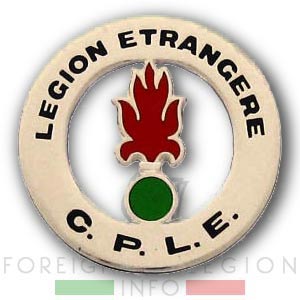
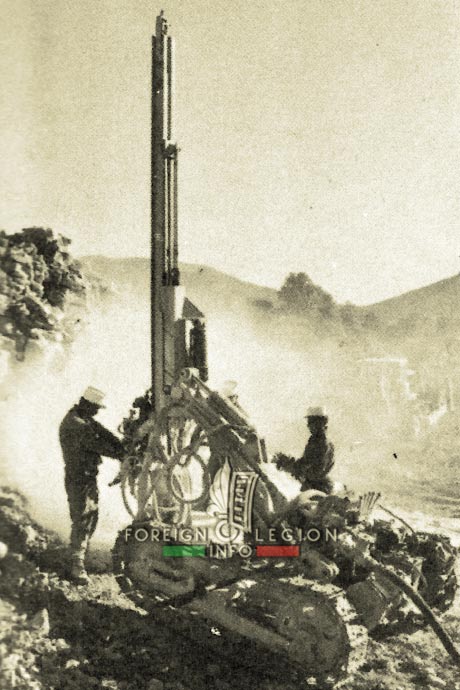






Canjuers 1975-1978
The years 1975 and 1976 saw other projects to be realized, such as the construction of a helicopter landing zone, an obstacle course, a launch site for MILAN anti-tank missiles and installations for artillery observatories. The two construction companies also built several firebreaks, accompanied with intervention roads, as fire prevention measures. Since January 1975, a fire-fighting platoon composed exclusively of legionnaires (five groups) had been permanently monitoring the entire camp.
In May 1975, Captain Gansmann was replaced by Captain Stemberger as commander of the Legion Company. Stemberger, a former legionnaire who had enlisted in 1949, left the company and the Legion in October 1976. Captain Pierquin succeeded him.
That same month, in October 1976, Lieutenant Colonel Bissonnier took command of the 61e BMGL.
In 1977, the CTL legionnaires completed other constructions, including the Guent submersible ford (Lieutenant Phong’s platoon), the Lagnes tank firing range, consisting of 8 miles (13 km) of tracks (Lieutenant Mey’s platoon), and the Amandiers firing range (Lieutenant Truc’s platoon). The 2nd Platoon (Lieutenant Bustos), with its crusher and its giant Berliet T30 trucks, extracted, crushed and delivered thousands of tons of construction aggregate for these sites.
Nevertheless, the year 1978 marked the end of the 61e BMGL’s mission at Canjuers. In seven years of hard work, impressive results had been achieved:
- 600,000 m3 of earthworks
- 800,000 m3 of material transported
- 400,000 m3 of construction aggregate extracted
- 70 miles (110 km) of roads
- 250 miles (110 km) of tracks
- 50 fords and concrete piers for tanks
- 4 outdoor campsites (each for a regiment, i.e. for about 1,000 men)
- a helicopter landing zone
In August 1978, the battalion began to leave Camp Canjuers. It would be replaced by the CRTRLE (Foreign Legion Reinforced Road Building Company), created the same month.
Simultaneously, on August 25, Captain Llorens took command of the CTL.

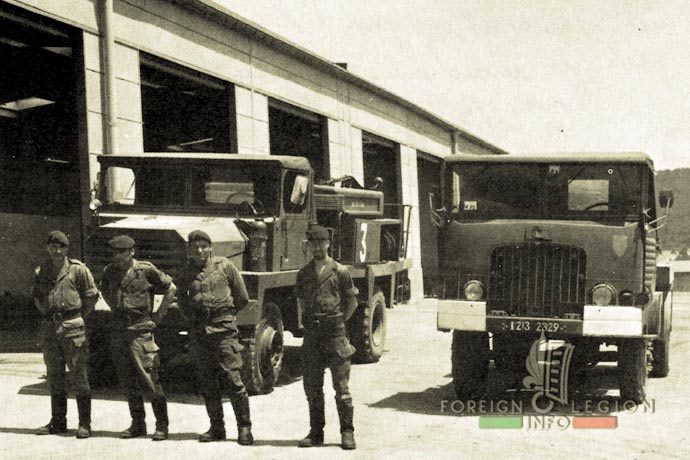



Larzac 1978-1981
In September 1978, the 61e BMGL was stationed at Camp Larzac (also known as Camp La Cavalerie), near Millau, in the Aveyron Department of Southern France. This was an old military camp with a training area nearby, intended for renovation and modernization.
Necessary arrangements were made for the installation of the battalion in the camp, which lasted until December.
On October 17, Lieutenant Colonel Bastian became the new commander of the 61e BMGL.
In 1979 and 1980, work was in full swing at Larzac. The most important task was the development of the ALAT Zone, a huge 40-acre (16-hectare) construction site for a French Army Light Aviation regiment of combat helicopters, i.e. 60 aircraft. In the meantime, it was also necessary to build a road network for the camp, as well as parking for tanks and vehicles.
On August 25, 1980, Captain Bustos succeeded Captain Llorens as commander of the Legion Company.
A month later, the legionnaires of the 2e REP presented the new FAMAS rifle to the personnel of the CTL, which was still equipped with the old MAS 49/56.
In October, Lieutenant Colonel Bironneau took over the 61e BMGL. He was a veteran of the battalion, where he had served as a captain at its very beginning, in 1971.
In 1981, the CTL legionnaires continued to build the ALAT Zone. Their other projects were five campsites (bivouacs with a capacity of one regiment per bivouac), and the development of the site for the future military railroad station of L’Hospitalet.
However, for political reasons, work at Larzac had to be interrupted prematurely. Instead, the battalion’s units were detached to other locations.









La Courtine and Garrigues 1981-1982
In early July 1981, the battalion dispersed and its units became semi-independent. The Legion Construction Company was ordered to Camp La Courtine in Central France, while the Engineer Corps Construction Company moved first to Camp Caylus, then to Camp Souge, near Bordeaux in Western France. In a few months, the 61e BMGL would succeed in starting eleven new construction sites spread over a front of 300 miles (500 km), from the shores of the Atlantic to those of the Mediterranean. Only the CCS company remained in the rear base at Larzac.
At Camp La Courtine, the legionnaires had to build in particular a moving target for MILAN anti-tank missile range. With their D9 and D6 bulldozers, loaders, T30 trucks and compactors, they turned over 40,000 cubic meters of materials, extracted from ground strewn with shells, balls, cartridges and other similar projectiles. They had accumulated there over the past decades during military exercises. This waste required special attention and the presence of a bomb disposal team.
Nevertheless, in October, the Legion company had to move again, this time to Camp Garrigues, near Nimes in Southern France. There, from mid-November 1981 to late March 1982, the CTL carried out major work to upgrade the camp’s infrastructure, mainly the construction of a shooting range requiring 15,000 m3 of earthworks, the building of a 4-mile (7 km) track for armored vehicles, the improvement of a large firebreak and the clearing of more than 50 acres (20 hectares) of scrubland.
Back at Camp La Courtine in April 1982, the legionnaires continued to carry out their tasks: a moving target for the MILAN missile firing range, a simulated urban training area, and a 22-mile-long (35 km) beltway in the north of the camp, as well as various trenches.
At this time, however, the end of the battalion’s existence was slowly approaching. On July 12, at Larzac, the last joint ceremony took place marking the battalion’s official departure from the camp.
The unit split into two permanently separated parts. The CCS and CTG companies moved to Camp Coëtquidan before joining Camp Mourmelon in Northeastern France, to form the 72nd Engineer Regiment there on November 1. As for the CTL legionnaires, who had been commanded by Captain Kampmeyer since the end of June, they remained at Camp La Courtine until late October.
Then, on November 2, 1982, an intimate dissolution ceremony took place at Quartier Viénot in Aubagne. The Legion Construction Company was officially disbanded and the unit’s fanion deposited at the Legion Museum. The history of the battalion that built the largest military camp in Western Europe came to an end.
Today, the camps of Canjuers, Larzac, Garrigues and La Courtine still preserve concrete traces of the remarkable efficiency of the men of the Foreign Legion, who reaffirmed that legionnaires are both elite soldiers and competent builders – just like their ancient predecessors in the Roman Empire, or their ancestors in the North African and Indochina campaigns.


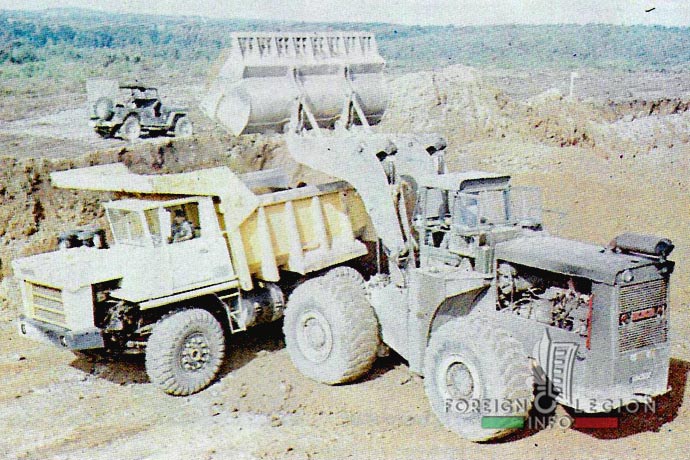

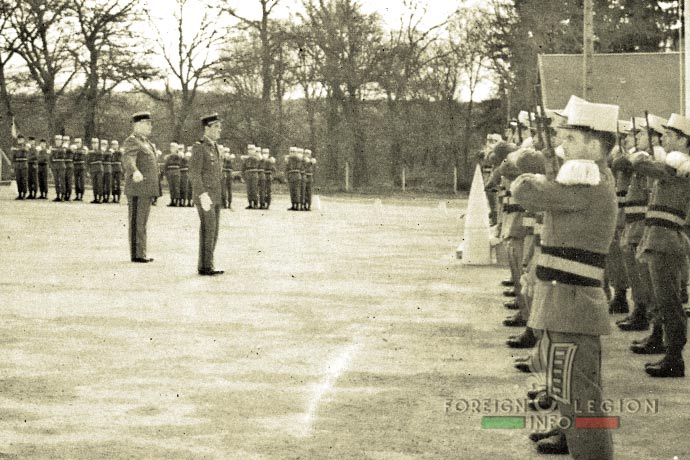
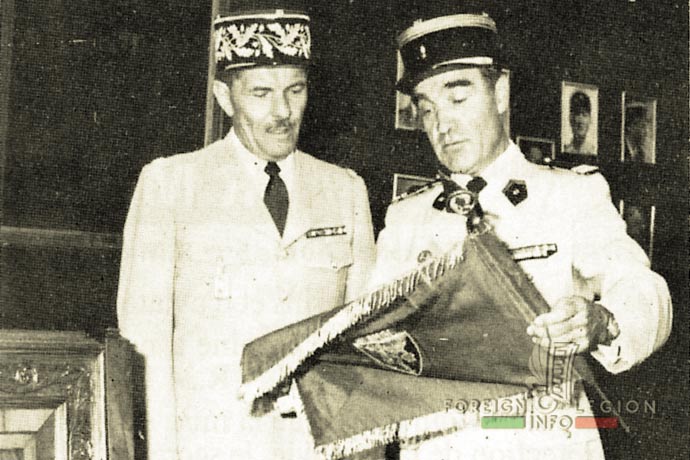


———
Main information & images sources:
Képi blanc magazines
Pierre Dufour: Génie-Légion (Lavauzelle, 2000)
Wikipedia.org
———

You may consider to support this website at any time through our store. Thank you.
EU-based readers can visit our EU-based shop, to avoid import charges.
———
Related articles:
3e BMLE: 3rd Foreign Legion Task Force
16th Engineer Maintenance Company
2nd Foreign Engineer Regiment: The origins
BLEM: Foreign Legion Madagascar Battalion
—
The page was updated on: November 4, 2022
